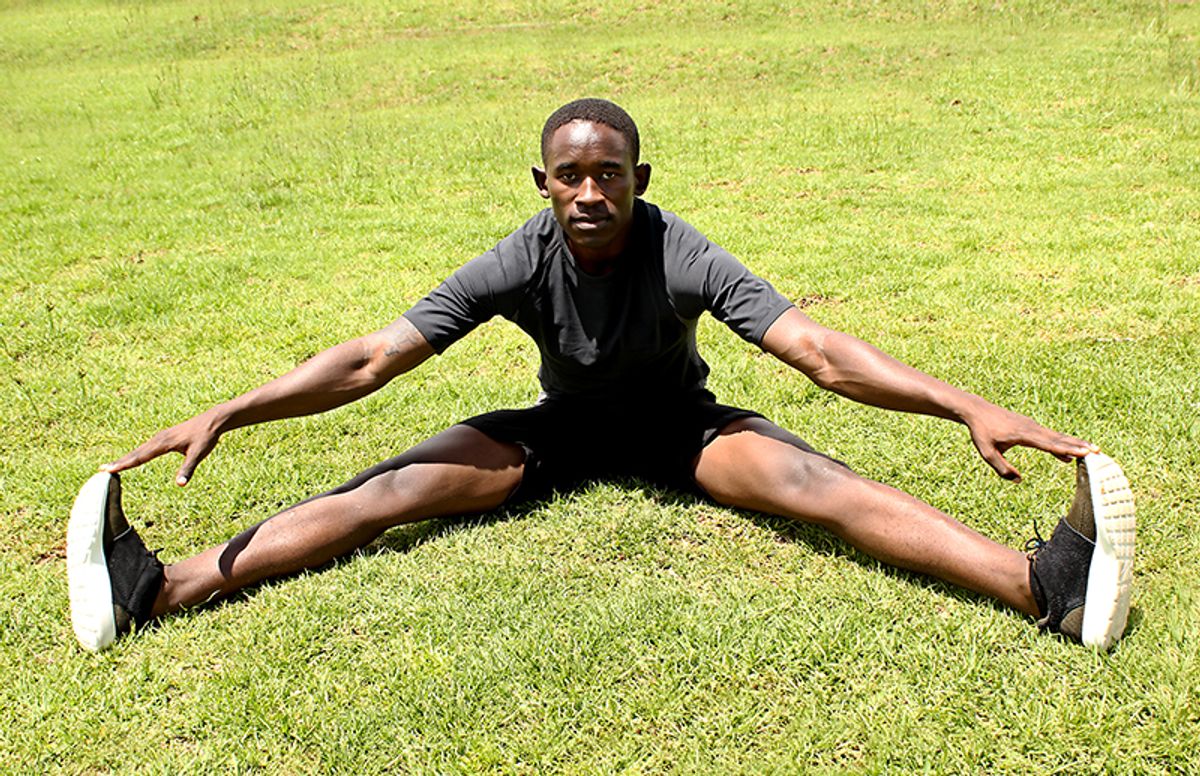
Repair and Rebuild: Effective Muscle Healing Post-Workout
Feeling Sore? Let's Talk Recovery

Understanding Muscle Soreness
Ever hit the gym hard and felt like you've been hit by a bus the next day? That's Delayed Onset Muscle Soreness (DOMS) for you. It's the pain and stiffness you feel after a workout that's more intense than your muscles are used to. It's totally normal and a sign that your muscles are adapting and growing stronger.
- DOMS typically peaks around 24 to 72 hours after exercise.
- It's caused by micro-tears in muscle fibers, which trigger inflammation and soreness.
- Recovery involves a mix of rest, nutrition, and light activity to ease stiffness.
While it might be tempting to lounge on the couch when soreness strikes, don't give in to complete inactivity. Gentle movement can actually help speed up recovery by increasing blood flow and reducing inflammation.
The Role of Rest Days
Think of rest days as your body's prime time for repair and rejuvenation. It's not just about being lazy; it's a crucial part of any training regimen. Rest days help prevent overuse injuries, giving your muscles the much-needed break they deserve after intense workouts.
- Listen to your body: If you're feeling worn out, take the hint!
- Plan ahead: Schedule rest days just like you would a workout.
- Stay active: Opt for light activities like walking or yoga to stay limber.
Remember, rest days are not about doing nothing. They're about doing what's right for your body's recovery process.
Hydration and Nutrition for Recovery
After pushing your muscles to the limit, it's crucial to refuel and rehydrate. Proper hydration and nutrition are key to muscle recovery and can significantly reduce soreness. Think of your body like a car; without the right fuel, it won't run efficiently.
Hydration isn't just about guzzling water post-workout. Electrolytes, like sodium and potassium, are essential for water retention and muscle function. Here's a quick list of hydrating foods and drinks:
- Coconut water
- Watermelon
- Cucumbers
- Sports drinks with electrolytes
When it comes to nutrition, protein is the star of the show, but carbs and fats play supporting roles. A balanced meal after exercise helps replenish energy stores and provides the nutrients needed for muscle repair. Here's a simple guide to post-workout nutrition:
Aim for a mix of protein, carbohydrates, and fats within 45 minutes of your workout to kickstart the recovery process.
Remember, recovery isn't a one-size-fits-all. Listen to your body and adjust your hydration and nutrition accordingly.
The Magic of Movement: Active Recovery Explained

What is Active Recovery?
Ever heard of active recovery? It's not just lounging on the couch after a brutal leg day. Active recovery involves low-intensity exercise to stimulate blood flow and aid in the healing process. Think of it as a gentle nudge to your muscles, telling them to repair and rebuild without overdoing it.
- Walking
- Swimming
- Yoga
- Cycling
These are just a few examples of active recovery activities. They're like the cool-down lap after a race; they help your body transition from high exertion to rest.
Active recovery is the sweet spot between being a couch potato and running a marathon on your rest day. It's about finding balance and listening to your body.
Remember, the goal is to move just enough to boost recovery, not to set personal records. So, take it easy and enjoy the recovery ride!
Best Practices for Active Recovery
When it comes to active recovery, it's all about finding the right balance. Listen to your body and engage in low-intensity activities that promote blood flow without overtaxing your muscles. Think of it as a gentle nudge to your body's repair process, not a full-on shove.
Consistency is key. Make active recovery a regular part of your routine, rather than an afterthought. Here's a quick list to get you started:
- Light jogging or walking
- Swimming
- Yoga or Pilates
- Cycling at a relaxed pace
- Foam rolling
Remember, the goal is to aid recovery, not hinder it. If you're feeling more fatigued after your active recovery session, you might be doing too much.
Lastly, don't forget to mix things up. Variety isn't just the spice of life; it's also a crucial component of an effective active recovery strategy. Different activities target different muscle groups and can prevent boredom, keeping you motivated and on track with your fitness goals.
Active vs. Passive Recovery
When it comes to getting back in the game after a tough workout, you've got two main strategies: active and passive recovery. Active recovery involves low-intensity movement to stimulate blood flow and aid the healing process, while passive recovery is all about kicking back and giving your muscles a complete rest.
- Active Recovery: Light jogging, swimming, or cycling
- Passive Recovery: Total rest, zero exercise
Remember, the best approach depends on your body's needs and the intensity of your workout. Listen to your muscles and choose wisely!
While active recovery can speed up muscle repair, don't underestimate the power of doing absolutely nothing on your rest days. Sometimes, the best thing for your body is to just chill out and let time work its magic. But hey, if you're feeling antsy, a gentle walk or a leisurely bike ride might be just what you need to shake off the stiffness without overdoing it.
Supplements and Superfoods for Muscle Repair

Protein: Building Blocks of Muscle
After a grueling workout, your muscles are in a state of repair and they're screaming for protein. Protein is essential for muscle repair and growth, providing the amino acids your body needs to rebuild muscle fibers that are broken down during exercise. Without adequate protein, your recovery could stall, and you might not see the gains you're working so hard for.
Protein isn't just about quantity, though. The quality of the protein you consume matters just as much. Opt for complete proteins that contain all the essential amino acids your body can't produce on its own. Here's a quick list of high-quality protein sources:
- Chicken breast
- Turkey
- Eggs
- Greek yogurt
- Cottage cheese
- Whey or plant-based protein powders
Remember, timing is also key. Consuming protein shortly after your workout can help maximize muscle repair and growth. Aim for a protein-rich snack or meal within 30 to 45 minutes post-exercise.
Vitamins and Minerals to Boost Healing
When it comes to muscle recovery, vitamins and minerals are your body's best friends. They're like the unsung heroes that swoop in to speed up the repair process, reduce inflammation, and get you back to feeling 100%.
Calcium and magnesium are like the dynamic duo for muscle function, helping to regulate muscle contractions and prevent cramps. But let's not forget about the antioxidants! Vitamins C and E are the bodyguards that protect your cells from damage, especially after those grueling workouts.
Here's a quick rundown of some key players:
- Vitamin C: Collagen production, immune support
- Vitamin E: Protects cells from oxidative stress
- Zinc: Wound healing, immune function
- Iron: Oxygen transport in the blood
Remember, while supplements can be helpful, the best way to get these nutrients is through a balanced diet full of colorful fruits and veggies, lean proteins, and whole grains.
So next time you're stocking up on groceries, think of your cart as your personal toolkit for recovery. Load up on nutrient-rich foods and watch your body thank you with quicker, more effective healing.
Natural Supplements vs. Synthetic: What's Better?
When it comes to muscle repair, the debate between natural supplements and synthetic ones is ongoing. Natural supplements are often preferred for their whole-food sources and fewer additives. However, synthetic supplements can be more concentrated and offer specific nutrients that might be harder to obtain in adequate amounts from food alone.
It's crucial to consider the bioavailability of the supplement, which is how well your body can absorb and use it.
Here's a quick rundown of the pros and cons:
-
Natural Supplements
- Pros: Whole food sources, fewer additives, generally better absorption.
- Cons: Can be less concentrated, more expensive, and have a shorter shelf life.
-
Synthetic Supplements
- Pros: Highly concentrated, cost-effective, longer shelf life.
- Cons: May contain more additives, potential for lower bioavailability.
Ultimately, the choice between natural and synthetic supplements should be based on personal health goals, dietary restrictions, and preferences. Consulting with a healthcare professional can help you make an informed decision that aligns with your body's needs.
Stretching and Mobility: Flex Your Way to Recovery

The Importance of Stretching Post-Workout
Ever finished a workout and felt like you've been hit by a bus the next day? Yeah, we've all been there. But here's the thing: stretching post-workout can be a game-changer for your recovery. Stretching helps to alleviate muscle tightness, improve flexibility, and can even speed up the healing process. It's like giving your muscles a big ol' hug after they've worked hard for you.
Stretching isn't just about touching your toes and holding it for eternity. It's about listening to your body and giving it the care it needs. Here's a quick rundown of why you shouldn't skip this step:
- It increases blood flow to your muscles, which brings in nutrients and kicks out waste.
- It reduces the risk of injury by keeping muscles long and limber.
- It can improve your range of motion, which means better performance next time you hit the gym.
Remember, stretching should never be painful. If it hurts, you're pushing too hard. Ease into each stretch and hold it for 20-30 seconds for the best results.
So next time you're ready to collapse onto the couch post-sweat sesh, take a few minutes to stretch it out. Your body will thank you, and you'll be back at it stronger than ever.
Dynamic vs. Static Stretching
When it comes to stretching, knowing when to use dynamic or static techniques can make all the difference in your recovery game. Dynamic stretching is all about movement - think leg swings or arm circles to get the blood flowing before you hit the weights. It's perfect for warming up those muscles and prepping them for action.
On the flip side, static stretching involves holding a stretch for a period of time, like reaching down to touch your toes and staying put. This type of stretching is a go-to for cooling down because it helps in lengthening your muscles after they've been contracted during your workout.
Remember, the goal is to aid recovery, not to push your limits. Gentle stretches can help alleviate muscle tightness without overdoing it.
Here's a quick rundown to help you decide which to use when:
- Dynamic before: Get those muscles ready and prevent injury.
- Static after: Cool down and help muscles relax.
Mixing up both types in your routine can lead to better flexibility and less soreness. So next time you're gearing up for a gym session or winding down after, keep in mind which stretching style will serve you best.
Mobility Routines for Every Muscle Group
Having a go-to mobility routine for each muscle group can make all the difference in your recovery game. Mobility exercises enhance your range of motion and can significantly reduce the risk of injury by keeping your muscles and joints supple.
Upper body, lower body, and core - each has its unique demands. Here's a quick breakdown:
- Upper Body: Focus on shoulder rotations, arm swings, and wrist stretches.
- Lower Body: Include hip circles, leg swings, and ankle rolls.
- Core: Don't forget the spinal twists and side bends for a well-rounded routine.
Remember, consistency is key. Integrating mobility work into your daily routine can lead to long-term benefits and better overall performance.
While it's tempting to skip on stretching, dedicating just a few minutes each day to mobility can pay off with improved posture, better movement efficiency, and a happier body. So, take the time to stretch it out!
Sleep and Muscle Recovery: Dreaming of Gains

How Sleep Affects Muscle Repair
Ever wondered why you feel like a superhero after a good night's sleep? Sleep is crucial for muscle repair, and it's not just about getting those eight hours. During sleep, your body goes into overdrive to heal and rebuild the muscles you've worked during the day.
Growth hormone, which is essential for muscle development, is released in pulses as you snooze. This hormone stimulates tissue growth and muscle repair, and guess what? Its peak release happens during deep sleep stages. So, skimping on sleep could mean you're missing out on prime muscle-building time.
- Deep Sleep: Vital for growth hormone release
- REM Sleep: Important for overall recovery
Ensuring you get enough quality sleep is like hitting the save button on your workout gains. It consolidates the hard work you've put in at the gym and helps your muscles come back stronger.
Remember, it's not just about quantity; it's the quality of sleep that can make or break your recovery game. So, make your bedroom a sanctuary for sleep, keep a consistent bedtime, and avoid caffeine before hitting the hay. Your muscles will thank you!
Tips for a Restful Sleep
Getting quality sleep is crucial for muscle recovery, but it's often easier said than done. Creating a sleep-conducive environment can significantly improve your sleep quality. Keep your bedroom dark, cool, and quiet, and consider investing in a comfortable mattress and pillows.
Consistency is key when it comes to sleep. Try to go to bed and wake up at the same times every day, even on weekends. This helps regulate your body's internal clock and can improve your sleep quality over time.
Remember, the goal is to create a nightly routine that signals to your body that it's time to wind down and prepare for sleep.
Here's a simple checklist to help you establish a sleep-friendly routine:
- Avoid caffeine and heavy meals close to bedtime.
- Limit exposure to screens and bright lights in the evening.
- Engage in a relaxing activity before bed, such as reading or taking a warm bath.
- Practice deep breathing or meditation to calm your mind.
By following these tips, you can enhance your sleep quality, which is essential for muscle repair and overall well-being.
Understanding Sleep Cycles and Growth Hormone Release
When we hit the hay, our bodies go to work. Sleep cycles play a pivotal role in muscle recovery, with growth hormone (GH) doing its heavy lifting during the deep sleep stages. This hormone is crucial for tissue repair and muscle growth, making quality Z's a bodybuilder's best friend.
Sleep isn't just about quantity; it's about quality. Disrupted or shallow sleep can mean less GH release, so it's important to optimize your sleep environment and habits. Here's a quick rundown on how to do just that:
- Keep a consistent sleep schedule.
- Avoid caffeine and heavy meals close to bedtime.
- Create a restful environment, free from noise and light pollution.
Remember, your muscles grow when you're resting, not when you're lifting. Ensuring you cycle through enough deep sleep stages is like giving your muscles a first-class ticket to Gainsville.


